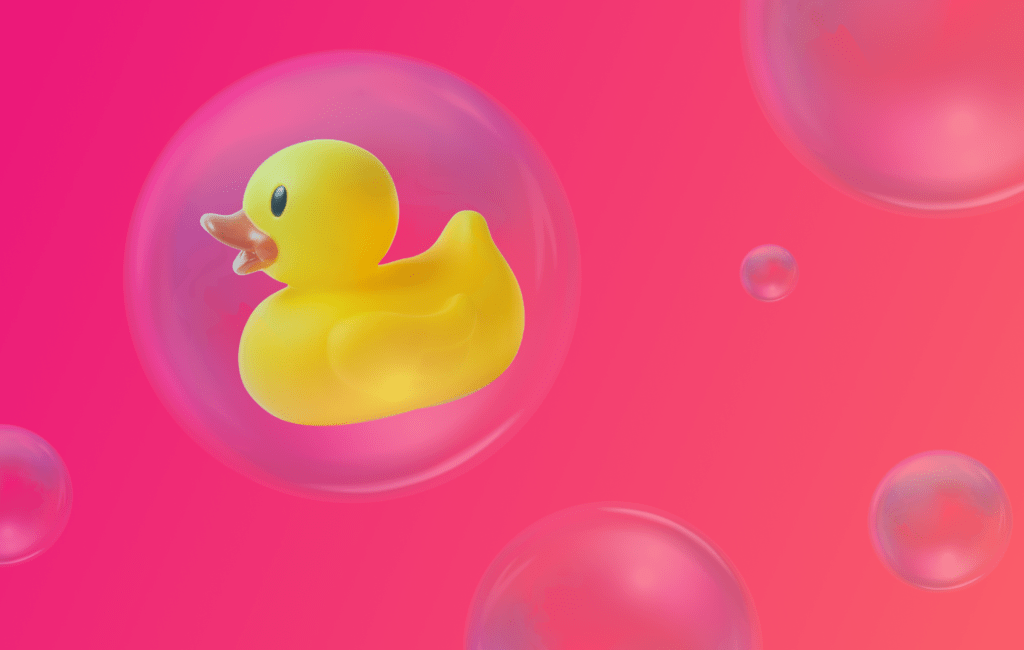AI is not a newcomer to the digital marketing landscape. However, the rise of AI becoming a household topic of conversation (and a generator of news headlines!) has given professionals in almost every industry lots of food for thought. An awful lot of industries have suddenly started to consider how the increase in newly-accessible AI affects them, and the design industry is no different.
Whilst the applications of AI within design are virtually as limitless as the scope of design itself, we thought it was worth discussing image generation – one of the most common and (somewhat!) problematic uses – in more detail.
AI-Generated Imagery & Copyright
AI opens up a lot of potential for image generation. It can be more cost effective than a designer (assuming the prompts it’s given are detailed enough) and far quicker at producing seemingly-wonderful images. But it doesn’t come without its problems! For example, some people dislike the idea of a creative discipline like design being given over to AI, and even giant brands like Marvel aren’t immune to a backlash when using it (the opening titles of 2023’s Secret Invasion miniseries were generated using AI-tools… and fans weren’t happy!). However, there’s also another massive pitfall: the risk of copyright infringement and licensing issues.
Imitating the artwork of old masters rarely causes too much controversy, but AI-generators are able to use the work of living artists to create new works of art, and that’s problematic.
Some AI generators use text prompts to transform a written description into a new art piece, whilst others can knock up artwork that’s based upon an inputted photo. However, the algorithms that all methods use to “scrape” existing art styles and imagery aren’t always trained to do so with the consent of artists.
There have been several cases where users of AI imagery have been penalised, such as when Getty Images sued Stability AI for using unlicensed Getty Images as the basis for new AI-generated pictures. The AI-generated art may have been new, but – to Getty Images – the essence and foundation of those images certainly wasn’t.
Because of tricky cases like the above, users of AI images are left in a very difficult situation, and we therefore feel rather forced to drop the following bombshell:

So… How Can I Use AI Imagery?
Upon first reading, you might be tempted to think that we’re being a bit strict with our above statement, but if you want to be totally watertight when it comes to copyright infringement then it really is the only option available to you. Ask yourself: are your business finances and reputation worth risking for a bit of AI-generated imagery? Of course they’re not!
However, just because we’re advising caution doesn’t mean that we’re categorically saying that you should only use AI for non-commercial purposes. We’re not! Making use of AI imagery to streamline your business operations without leaving yourself liable to copyright infringement is possible; you just have to think outside the box a little bit to mitigate the risks, and this is what we’ll explore next.
Here are some of the best ideas that we came up with:
1. Internal Brand Collateral
One of the safest ways that you can leverage AI-generated images is to keep them for internal use only. That might not sound particularly exciting or useful, but just think for a moment about the scope there is for graphics that support in-house presentations and documents. There’s a lot! There’s therefore a lot of room for AI to not only save you time, but also improve the quality of your internal brand presence. After all, AI images are just a few clicks away, and can really evolve your internal branding at speed.
As an aside, restricting your use of AI imagery to internal purposes also gets around the problem of actually copyrighting AI art. Most countries take the stance that, if there is no human creator for the resulting artwork to be attributed to, then it cannot be copyrighted: not ideal if you’re planning to showcase AI artwork externally!
2. Illustrations to Support Onsite Content
If you’re willing to venture away from using AI purely for internal use, then there’s the potential of using AI imagery in your onsite content: especially if you have a blog that’s focused on a really unique or ultra-specific topic. Rather than resorting to stock imagery, and effectively settling for a less relevant image, text-generated AI images could be used to support your copy. Just be very aware that you may have to quickly take the images in question down if it turns out that an artist feels that their toes are being trodden on!
A possible work-around would be to get a human designer to alter any AI images that you’re thinking of using before they’re publicly shared, as major and transformative changes can serve as the basis of an argument for new artwork.
3. Creating Image Variants for Ad Campaigns

Another way that AI can be used to assist with image generation is via the creation of image variants. Sometimes, your designer does a great job on an image, but you may be reluctant to commit to them cranking out numerous subtle variations when they could be working on a brand new work of art.
So, what tends to happen in this situation?
The same great image gets used again… and again… and again!
AI can be used to create variations of a designer’s original image, opening up a world where you have to rely on reusing the exact same images less frequently. You also have the advantage of knowing exactly who the original creator of the images that are being used to inspire the AI-generation tool is, and it’s therefore much safer to make use of them. You’ve already commissioned the original assets, so the owner of the original copyright isn’t an unknown quantity.
4. AI Adjustments to Licenced Images
Speaking of being on the right side of the owner of an image, remember us saying about “resorting to stock images” a few paragraphs ago? Well, another route that you could take is to first purchase a licence (or package) from an image provider.
Such companies allow access to a ton of new images and videos that you can use for commercial purposes. A big part of the reason why Getty Images decided to sue Stability AI was because the latter was using unlicensed stock images from Getty’s library for their AI experimentations. If you’ve already reached out to an image provider and paid for a licence, your options for AI imagery will open up a lot more.
5. Use it for Creative Ideas
Sometimes , designers just need a helping hand to come with a stellar idea! After all, writer’s block exists, so why shouldn’t graphic designers be cut the same level of slack?!
When a designer is still at the ideation stage, AI can be a massive helping hand, and create the basis for a designer to build on. We think that this type of arrangement is actually one of the most effective – not to mention safest – uses of AI: it’s an invaluable copilot, but not a replacement for human talent!
Protecting Your Business

If you’re set on leveraging the power of AI in the field of image creation, then we highly recommend the following principles:
- Only use AI imagery for non-commercial use.
- Get a human designer to alter AI-generated images.
- Request permission/purchase a license from the owner of the original imagery.
- Don’t create AI images of real people without consent.
- Avoid using trademarked imagery as the basis for AI images.
- Always cite the AI model that you’ve used.
We also urge you to keep in mind that, whilst AI imagery can certainly be beneficial, it really shouldn’t be a substitute for a skilled designer working on a larger-scale campaign or project. Or, at least, it shouldn’t be a substitute if you’re looking for the safest results from a copyright perspective, but also the best results!
If you’re considering a big design project in the near future and want to make sure that the resulting creations are not only safe to share, but also… well… creative, then our own creative design experts would be delighted to have a chat.
We can review your current design and branding choices with a view to re-imagining and revolutionising your direction, bringing your vision to life and maximising your presence. Give us a call today!
If you’re considering using AI to support your design and digital marketing efforts all around, we’ve also got this guide which explores exactly how you can get the most out of AI.
